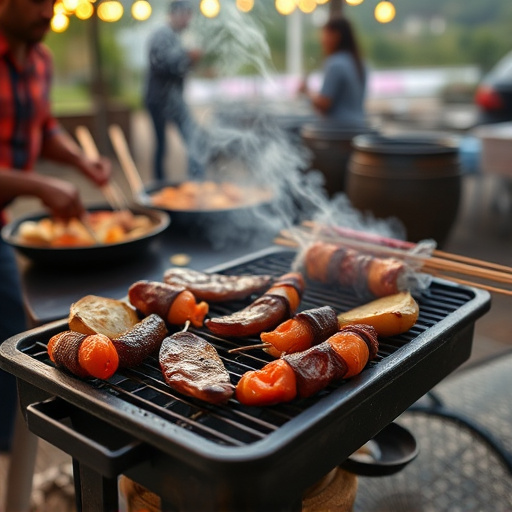Selecting the right rib cut (baby back or spare) is crucial for a satisfying baked BBQ ribs experience, offering either healthier options or hearty goodness. Using a dry rub seasoning blend enhances flavor and creates a culinary masterpiece. Baking at lower temps ensures tender, juicy ribs while allowing for easy sauce application during the final minutes for a caramelized glaze. Pair your Baked BBQ Ribs Recipe with various sides to create a balanced meal that satisfies all palates, and store leftovers properly for up to a week.
Discover the secrets to creating mouthwatering baked BBQ ribs with simple, easy-to-source ingredients. This comprehensive guide takes you through every step, from choosing the perfect cut of ribs for optimal tenderness to crafting a flavorful dry rub seasoning that will tantalize your taste buds. Learn the art of slow-baking, master when and how to apply BBQ sauce, explore pairing suggestions for a complete meal, and find tips for storing and reheating your delicious creation.
- Choosing the Right Cut for Baked Ribs
- Dry Rub Seasoning: The Foundation of Flavor
- Slow-Baking Method for Tender Results
- BBQ Sauce: When to Apply and Types to Consider
- Pairing Suggestions for a Complete Meal
- Tips for Storage and Reheating
Choosing the Right Cut for Baked Ribs
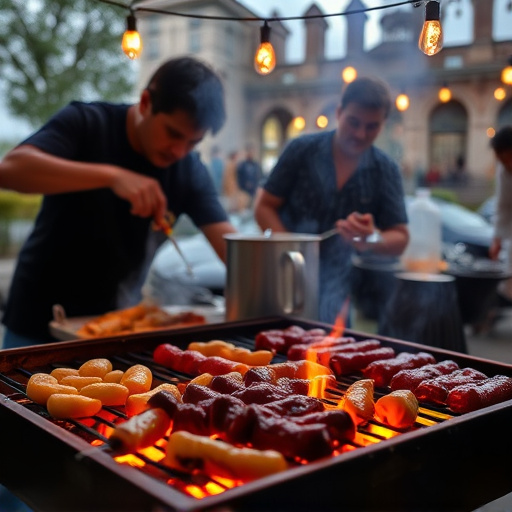
When it comes to baked BBQ ribs recipe, selecting the appropriate cut is half the battle won. The most popular and ideal choice for baking are baby back ribs or spare ribs. Baby back ribs, as the name suggests, are taken from the top of the rib cage, closer to the backbone, and they offer a leaner, more tender option. This cut has less fat marbling, making it perfect for a healthier version of baked BBQ ribs without compromising on flavour. On the other hand, spare ribs, with their meaty ends and larger portions, are loved for their rich taste and juicy texture. They may require a bit more time in the oven due to their higher fat content but are well worth it for BBQ rib enthusiasts.
Choosing between these two cuts depends on personal preference and how you envision your baked BBQ ribs recipe turning out. Both have their unique characteristics that can enhance different cooking methods, so feel free to experiment and find what works best for your palate. Remember, the right cut will ensure a mouthwatering, tender, and flavorful experience with every bite of your homemade baked BBQ ribs.
Dry Rub Seasoning: The Foundation of Flavor
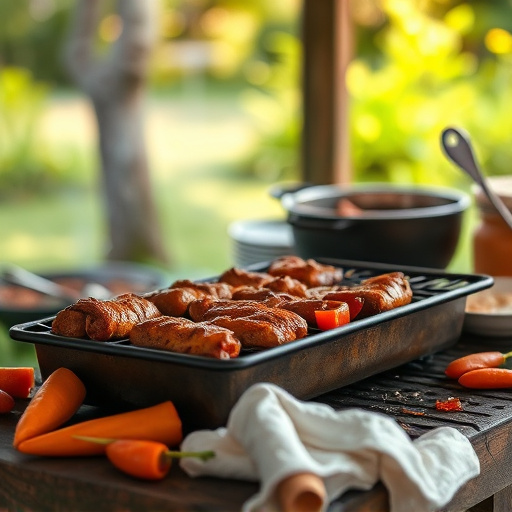
Dry Rub Seasoning plays a pivotal role in crafting mouthwatering baked BBQ ribs, serving as the foundation for an explosion of flavors. This blend of spices, typically applied generously to the meat before baking, is where the magic begins. Each spice contributes uniquely to the overall taste profile, from paprika’s smoky warmth to garlic and onion powders’ pungent notes, creating a complex and compelling seasoning that enhances the ribs’ natural juices.
The beauty lies in balancing these flavors perfectly; too much of one can overpower, while too little leaves a bland result. A well-crafted dry rub ensures that every bite is a symphony of spices, making your homemade baked BBQ ribs a true culinary delight.
Slow-Baking Method for Tender Results
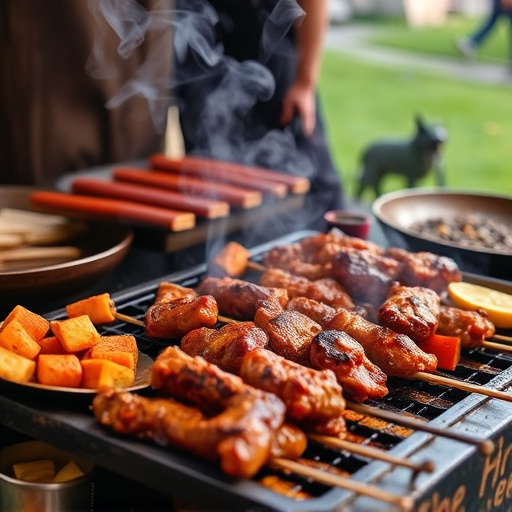
When it comes to achieving tender, mouthwatering baked BBQ ribs, the slow-baking method is a game-changer. Unlike other cooking techniques that rush the process, slow baking allows the ribs to cook gently over an extended period, ensuring each muscle fiber breaks down for a melt-in-your-mouth texture. This method is particularly effective for larger cuts of meat like ribs, where even heat distribution and time are key to reaching perfection.
By setting your oven at a lower temperature and baking the ribs slowly, you allow the natural juices to circulate and tenderize the meat. The result? Ribs that are incredibly juicy, flavorful, and oh-so-tender. This approach is ideal for those who prefer a no-fuss method of cooking, as it requires minimal attention once the oven is preheated. Simply prepare your ribs with a dry rub or marinade, place them in the oven, and let the magic happen over several hours—a perfect solution for feeding folks on a busy weeknight or for leisurely weekend dinners.
BBQ Sauce: When to Apply and Types to Consider
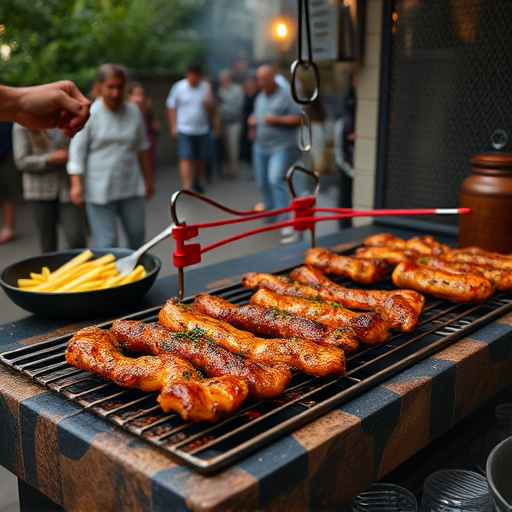
When crafting your perfect baked BBQ ribs recipe, timing is key when it comes to applying BBQ sauce. For optimal results, apply a generous coating of sauce during the last 15-20 minutes of baking. This ensures that the sauce caramelizes and forms a sticky, delicious glaze on top of your ribs. The natural sugars in the sauce react with the heat, creating a rich, complex flavor that will have your taste buds dancing.
Choosing the right BBQ sauce is equally important. Consider both tomato-based sauces for a classic, tangy profile and apple juice or vinegar-based sauces for a sweeter, more zesty twist. Each type offers a unique blend of flavors that can complement different rubs and cooking methods. Whether you prefer a traditional flavor profile or something more adventurous, selecting the right BBQ sauce will elevate your baked BBQ ribs recipe to new heights.
Pairing Suggestions for a Complete Meal
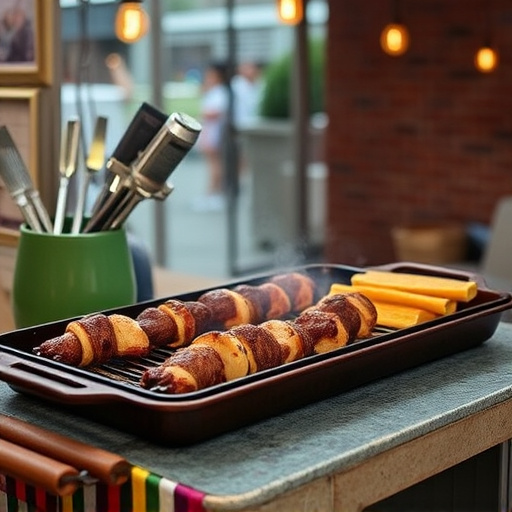
When it comes to a satisfying baked BBQ ribs recipe, the pairing possibilities are endless for creating a complete meal that tantalizes the taste buds. Start with a hearty side dish like creamy mashed potatoes or crunchy coleslaw to balance the rich, smoky flavors of the ribs. For a more robust meal, consider adding a fresh salad topped with a tangy vinaigrette dressing—the contrast in textures and tastes will delight your guests.
Complement the ribs with a side of grilled vegetables or a flavorful rice pilaf to round out the dish. Don’t forget about the dessert! A simple fruit cobbler or a rich chocolate mousse can cap off this mouthwatering meal, leaving your diners thoroughly satisfied and eager for more.
Tips for Storage and Reheating
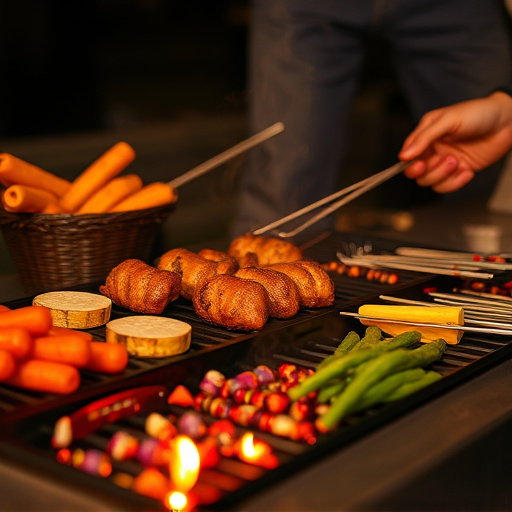
When storing baked BBQ ribs, it’s best to keep them in an airtight container at room temperature for up to 3 days. For longer-term storage, transfer them to the refrigerator, where they can last for up to a week. If you’re planning to reheat, it’s best to do so in a preheated oven at around 350°F (175°C) for approximately 20 minutes, or until they’re heated through and the sauce is bubbly. For extra crispiness, consider broiling them for a few minutes after reheating.
When it comes to leftovers from your baked BBQ ribs recipe, don’t let them go to waste! Reheated ribs can be just as delicious as fresh ones. The key is to maintain their moisture and flavor. Avoid microwaving, as it can dry them out. Instead, opt for oven reheating, which allows the heat to distribute evenly, ensuring every bite remains mouthwatering.
